Bassmaster_convention_floor
Do you have any thoughts on this post?
Raising a drink to better active management and improved odds for Nevada’s big game
As I turned off the pavement by the old Santa Fe gold mine and wound down the canyon, my mind filled with memories from past hunts in this area. There was the notch in the knife-back ridgeline where we spotted a friend’s ram bedded. Off to the left was the narrow canyon with the little seep where my son and I hunted chukars. Looming straight ahead of me in the distance stood the big shale-covered mountain where my wife missed a shot at a good ram on Thanksgiving Day almost 15 years ago. The shot haunts both of us to this day.
This part of the Gabbs Valley Range in Mineral County, Nev., is one of several areas recommended to be managed as Backcountry Conservation Areas in the Carson City BLM District Resource Management Plan. Sportsmen and other public lands stakeholders have been calling for this for years, and the final version of that management plan is now expected to be out in late 2017.
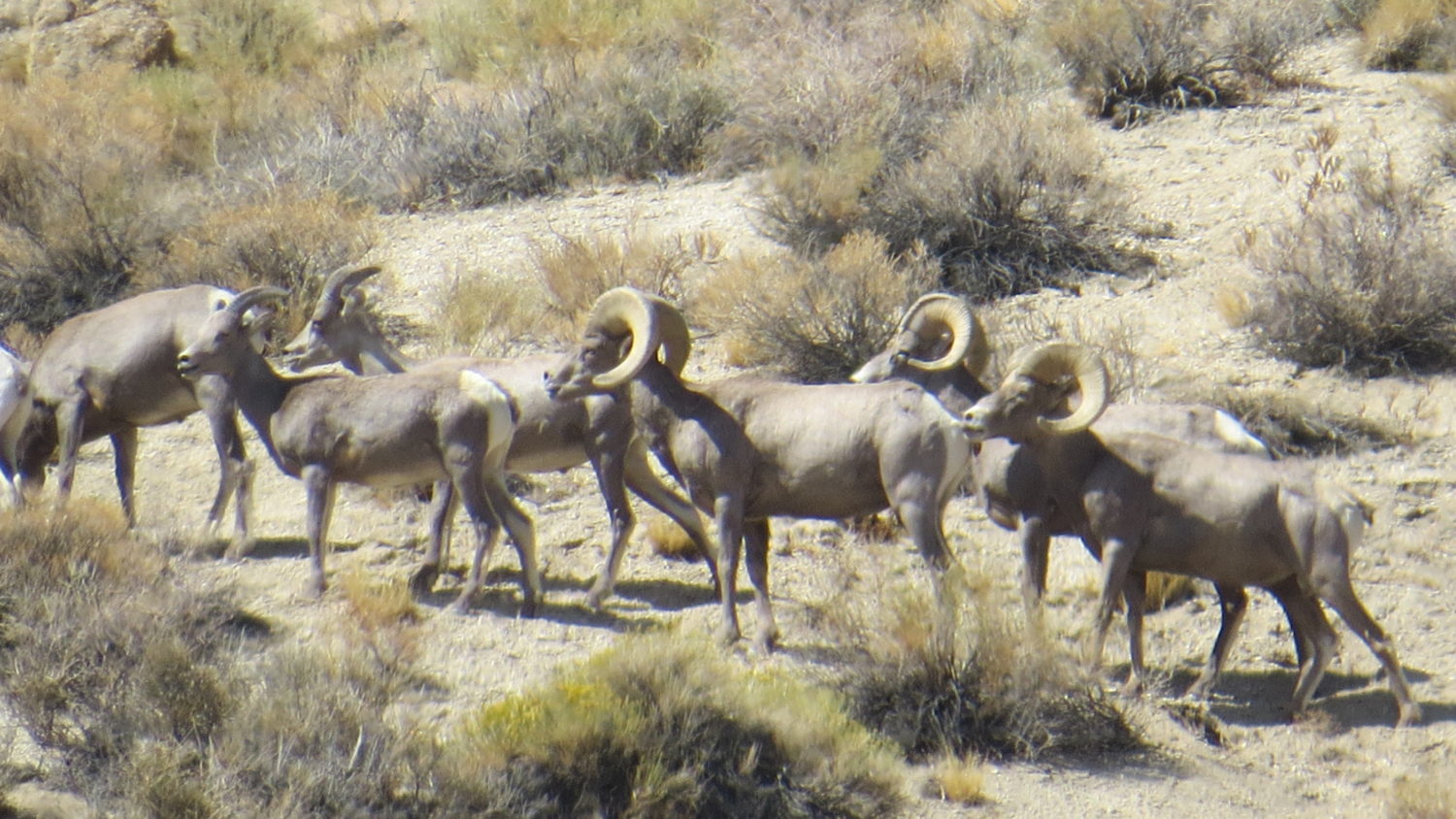
Nevada Department of Wildlife biologist Jason Salisbury, who was involved in developing the original RMP proposal, says that the beauty of backcountry conservation areas is the active management component. In other words, implementing this tool adds a layer of protection for habitat, while maintaining the BLM’s ability to build guzzlers, protect springs, remove pinyon pine and juniper, and implement other habitat improvements. This allows a good biologist, like Jason, to achieve his management goals more easily.
Thanks to @NBU, @NvDOW & @thetrcp, a backcountry guzzler now sustains a growing herd of bighorns. Share on XAnd on this particular day, he had more than 30 volunteers to help him. I was there with other members of Nevada Bighorns Unlimited to reconstruct a water catchment—or guzzler—built ten years ago. The guzzler was still fully functional, but the original design didn’t have the capacity to serve the number of bighorns that depend on it now. In Nevada’s arid climate, water is often the limiting factor for populations of desert bighorn and other wildlife. This area has very few natural springs, so several guzzlers have been built by sportsmen’s groups like NBU to provide adequate drinking water and better distribute sheep throughout the range.
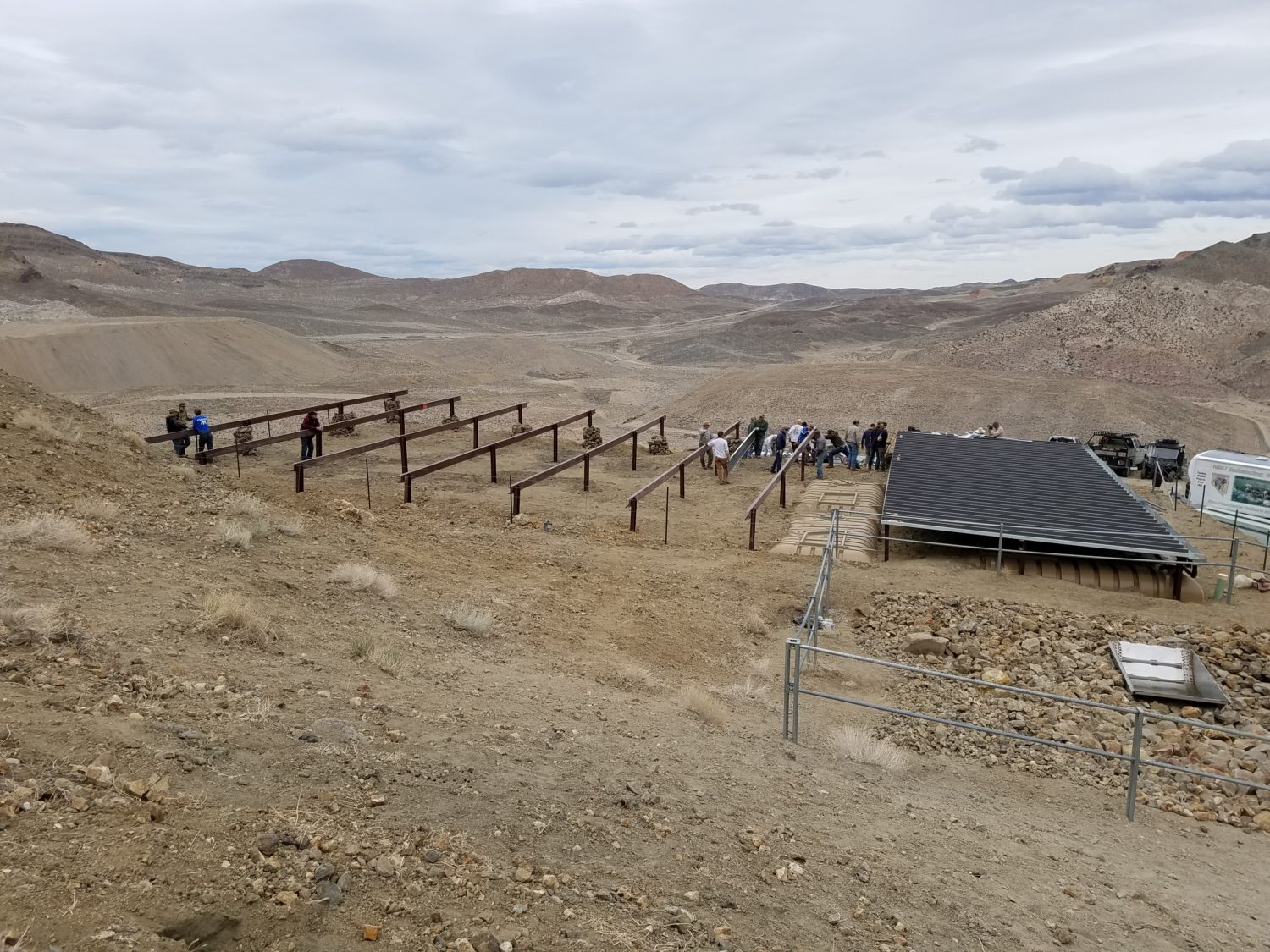
NDOW employees had worked during the previous week dismantling the existing guzzler and setting storage tanks in the ground. The guzzler we rebuilt that day will store about double what the previous one held, or nearly 12,000 gallons of water collected on a 50-by-90-foot apron—the largest one I have ever worked on. This presented us with some definite construction challenges. Finding a big enough area to make a level system required moving a lot of rocky material. Moving the rocks and digging the many holes for posts was made much easier by NDOW’s skilled backhoe operator. By 5 p.m., our work was nearly done.
We only had to haul several thousand gallons of water to the site the next morning.
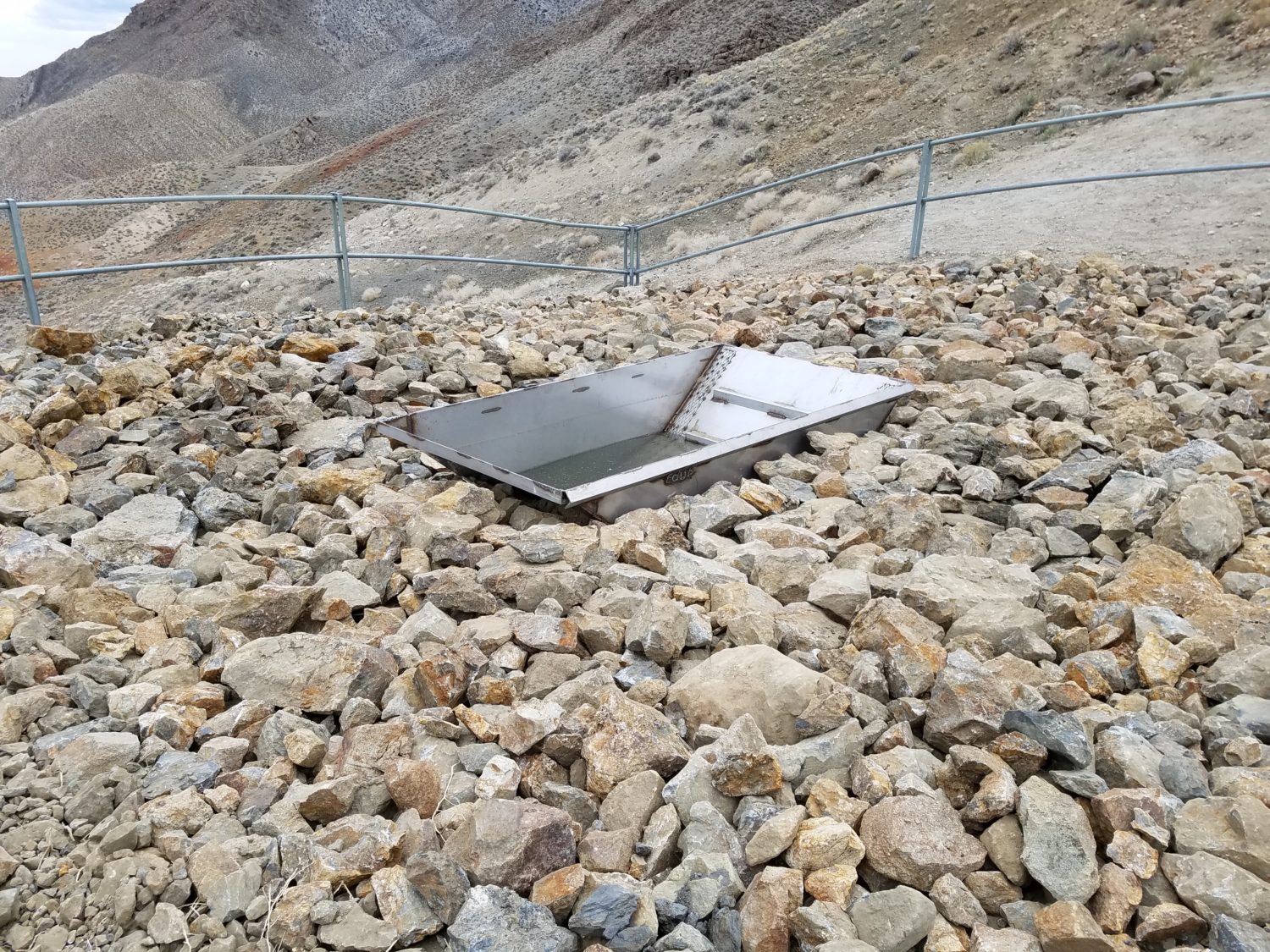
Even with that labor ahead of us, I couldn’t help but feel proud of the real, tangible conservation work we’d accomplished as I drove home. Knowing that more than 80 bighorns we’d observed at the old guzzler would now have enough water to get them through the hot summer months made the effort worthwhile.
So often, the connection between the conservation policies and practices we talk about and the results we’re trying to achieve can seem less than tangible. Here’s what’s clear: The importance of well-coordinated management for wildlife habitat cannot be understated, especially since it is linked to the future of our hunting traditions. And as sportsmen, it’s our responsibility to get involved in the ways we can, whether that’s volunteering for a project like this one, getting involved with a conservation organization, or writing a letter to a policymaker. Jason—or any biologist—will tell you that all of these are crucial to conservation.
As national-level funding is being cut, Idaho sportsmen buck the trend and take a collaborative stand to fund fish and wildlife management
As hunters and anglers across the country attempt to contemplate the cuts that may be coming for programs that benefit sportsmen and healthy habitat, it is easy for us to become discouraged and angry.
The 12 percent cut at the Department of Interior, for example, would trim $1.5 billion in funding to the agencies largely responsible for public lands. The U.S. Department of Agriculture budget would be cut by 21 percent, or $4.7 billion, and the Environmental Protection Agency budget would be cut by 31 percent, or $2.6 billion.
The numbers are straightforward, but the long-term damages to our shared pastime are hard to cogitate, especially for sportsmen, a user group that takes pride in helping pay the bills for the North American Model of Wildlife Conservation.
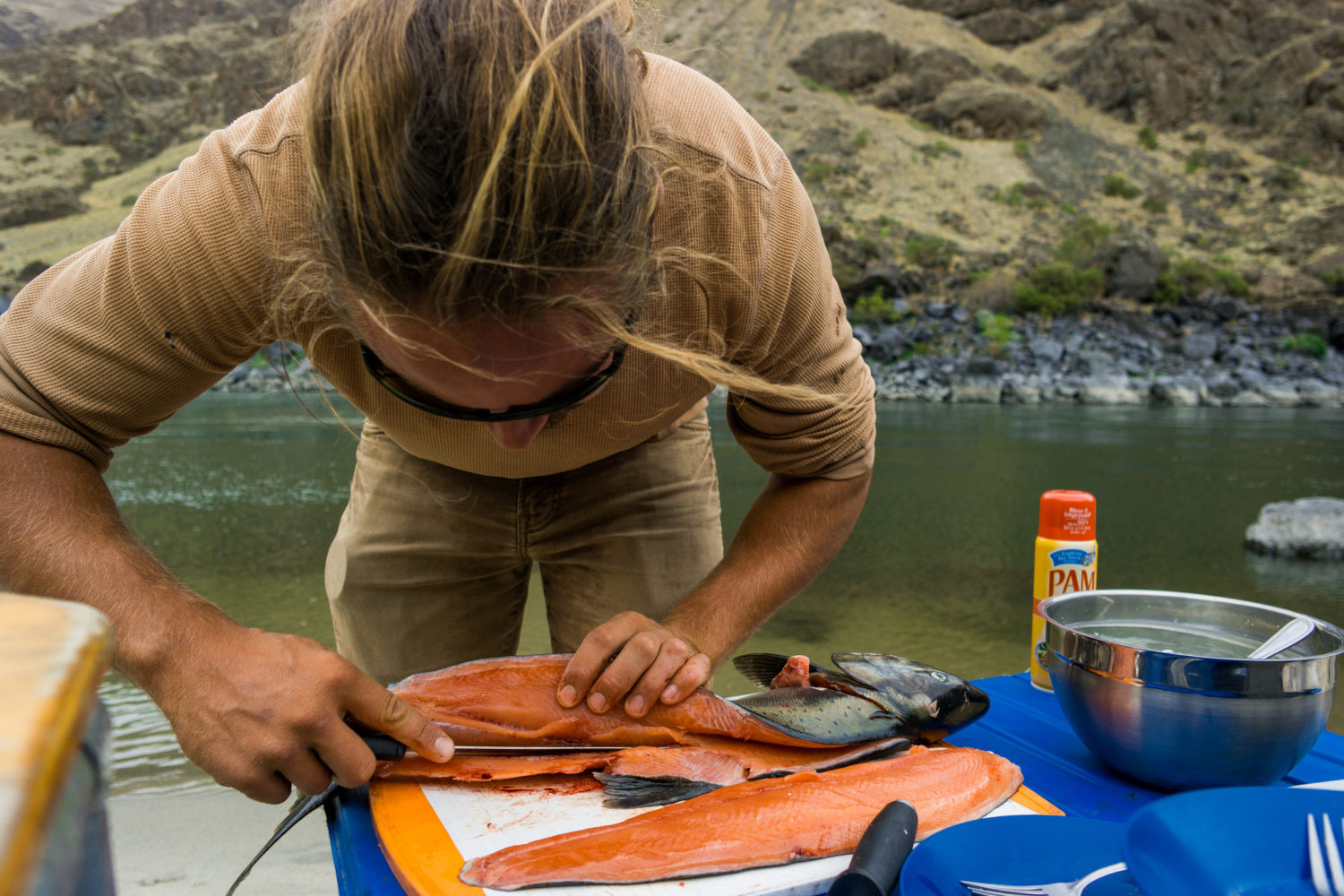
It is particularly hard to stomach here in Idaho, where sportsmen have voluntarily stepped up to the plate to increase fees on themselves for the greater benefit of our wildlife.
On March 17, the Idaho Senate unanimously approved a fee increase on hunters and anglers, the first undivided vote of its kind. If the bill is signed by Gov. Butch Otter, as expected, the fee increase will include a $5 fee on all licenses which will be used to pay for crop losses that come with healthy game herds. It will also mean that occasional license buyers, those who don’t buy a license or tag annually—would be charged 20 percent more. Die-hard hunters would be rewarded by being spared the additional cost.#Idaho's #originalconservationists willing to spend more to benefit fish & wildlife Share on X
Also in the mix, there is a new account created by Fish and Game to help buy access for hunters and anglers. Basically, unspent depredation funds will benefit hunters and anglers in the end.
Twelve years in the making, the fee bill seemed dead on arrival in February, when Rep. Marcus Gibbs said he wouldn’t address a fee increase unless the bill made concessions to ranchers who were suffering heavy damage from extreme winter weather. Officials with Idaho Department of Fish and Game used his argument to craft a compromise with the Farm Bureau: help addressing depredation in exchange for the fee increase.
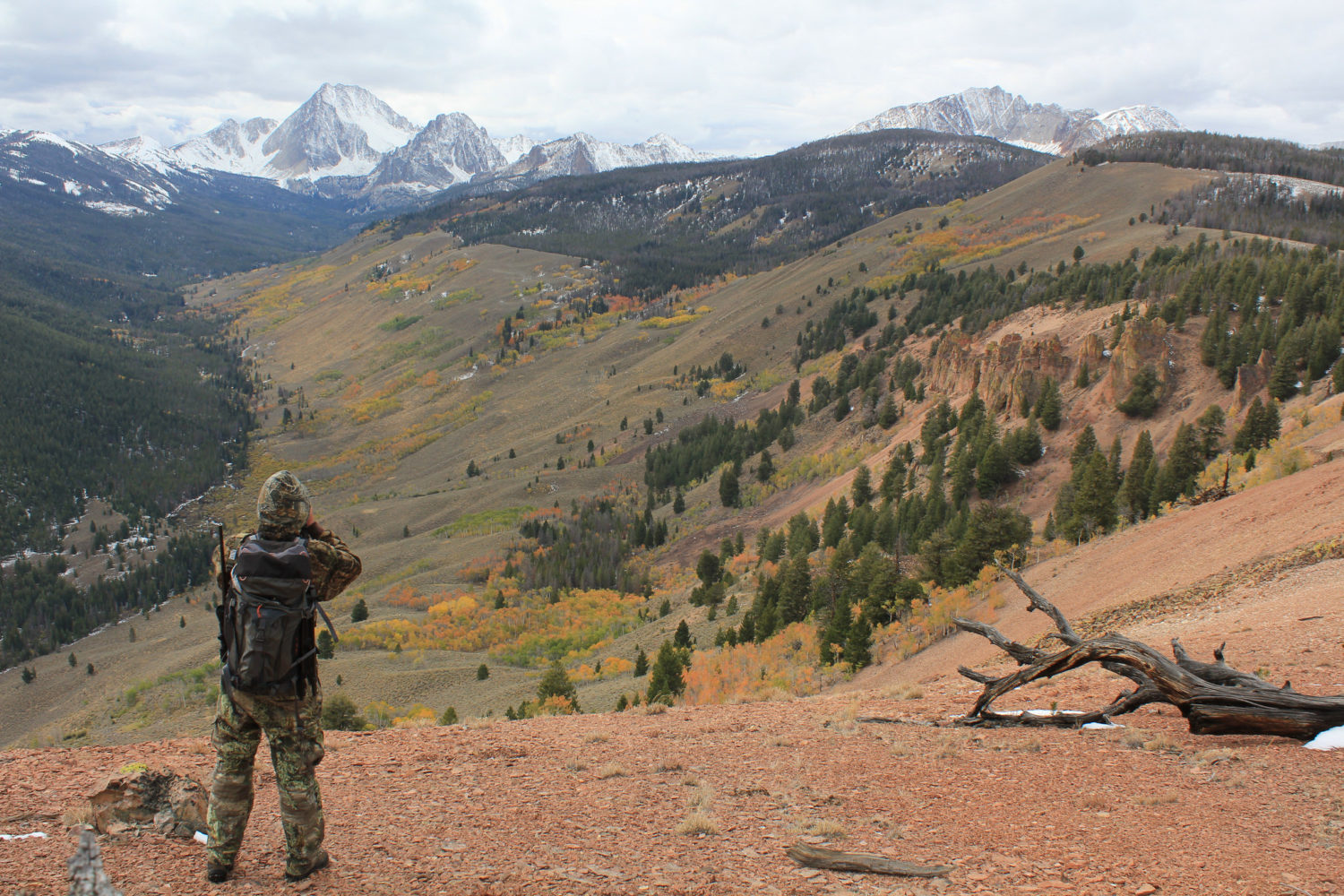
The work on the fee bill is less visible than the show of sportsmen might at a Public Lands Rally in Boise earlier this month, but it is more earth-shattering. The Idaho Farm Bureau and hunters and anglers of every stripe joined together to bring much needed financial relief to the wildlife department, which hadn’t had a resident fee increase since 2005. And, overcoming decades of animosity, the Idaho legislature finally gave cash-strapped wildlife managers a dose of critical revenue, while also addressing the complaints of ranchers who suffer when hungry elk, deer, and pronghorns raid their crops or haystacks.
The win represents seismic shifts in Idaho politics, and we will all benefit for decades to come.
Now sportsmen nationwide need to jump into the fray. President Trump’s budget outline is more mission statement than fiscal policy. We need to be heard as Congress, the true holders of the purse strings, contemplates Trump’s vision. Habitat and wildlife funding is crucial—so important that sportsmen are consistently willing to tax themselves to contribute more. We can only hope that Congress looks at the most recent example in Idaho as constituents again show their support and willingness to fund things that matter, not take funding away.
In Iowa, farmers aren’t legally required to reduce pollution that is harmful to fish and wildlife—but voluntary clean water practices can go a long way and deserve our support
Last week, a federal judge dismissed a potentially revolutionary lawsuit by the Des Moines Water Works, the utility that provides drinking water to the most populous city in the state, against drainage districts in three upstream counties in northwest Iowa. The lawsuit, which has been a hot topic among farmers and other concerned citizens for the last two years, also has big implications for sportsmen: The nutrient run-off that is bad for Des Moines’s water supply is also a problem for waterways and fish.
If the judge had allowed the Water Works lawsuit to progress, it could have completely upended the regulatory regime around water pollution nationwide by effectively bringing farm fields under the jurisdiction of the Clean Water Act, from which they are currently exempted. Instead, the dismissal puts a laser-like focus on the need for farmers to voluntarily reduce the nutrients leaving their fields and entering our waterways.
We’ve written before about how nutrients like nitrogen and phosphorous can seriously impair our lakes, rivers, and off-shore waters. They’re like high-octane food sources for algae, causing the microscopic stuff to grow unchecked. Some of the algae are quite toxic on their own, but they also starve waterways of much-needed oxygen and block sunlight from reaching underwater vegetation. The presence of too much algae, deoxygenation, and reduction or total loss of plant life creates a recipe for disaster for fish and wildlife, and therefore sportsmen.A lawsuit puts focus on farmers’ need to voluntarily reduce the nutrients leaving their fields. Share on X
But the run-off problem doesn’t end in our lakes, streams, and oceans. That water can eventually make its way to our sinks, creating major health risks. High levels of nitrates in drinking water can cause suffocation in infants by limiting the blood’s ability to carry oxygen, and have been linked to cancer in people of all ages. It’s critically important that we keep as many nutrients as possible out of the water in the first place, but, failing that, it’s essential that we clean up the water before we consume it.
Which brings us to the lawsuit. The complaint from Des Moines Water Works was that excessive nitrates were flowing from farm fields upstream via the Raccoon River, one of the city’s main sources of drinking water. This required the utility to treat the city’s water to an unprecedented—and very expensive—degree.
In their view, someone upstream needed to be held accountable, and the Water Works pursued a novel strategy under the Clean Water Act: Farmers and farm fields are largely exempt from Clean Water Act permitting requirements, so Des Moines Water Works argued that the drainage districts, which maintain the infrastructure responsible for the flow of on-farm waters into the state’s larger waterways, should be considered “point sources,” which are regulated under the Clean Water Act.
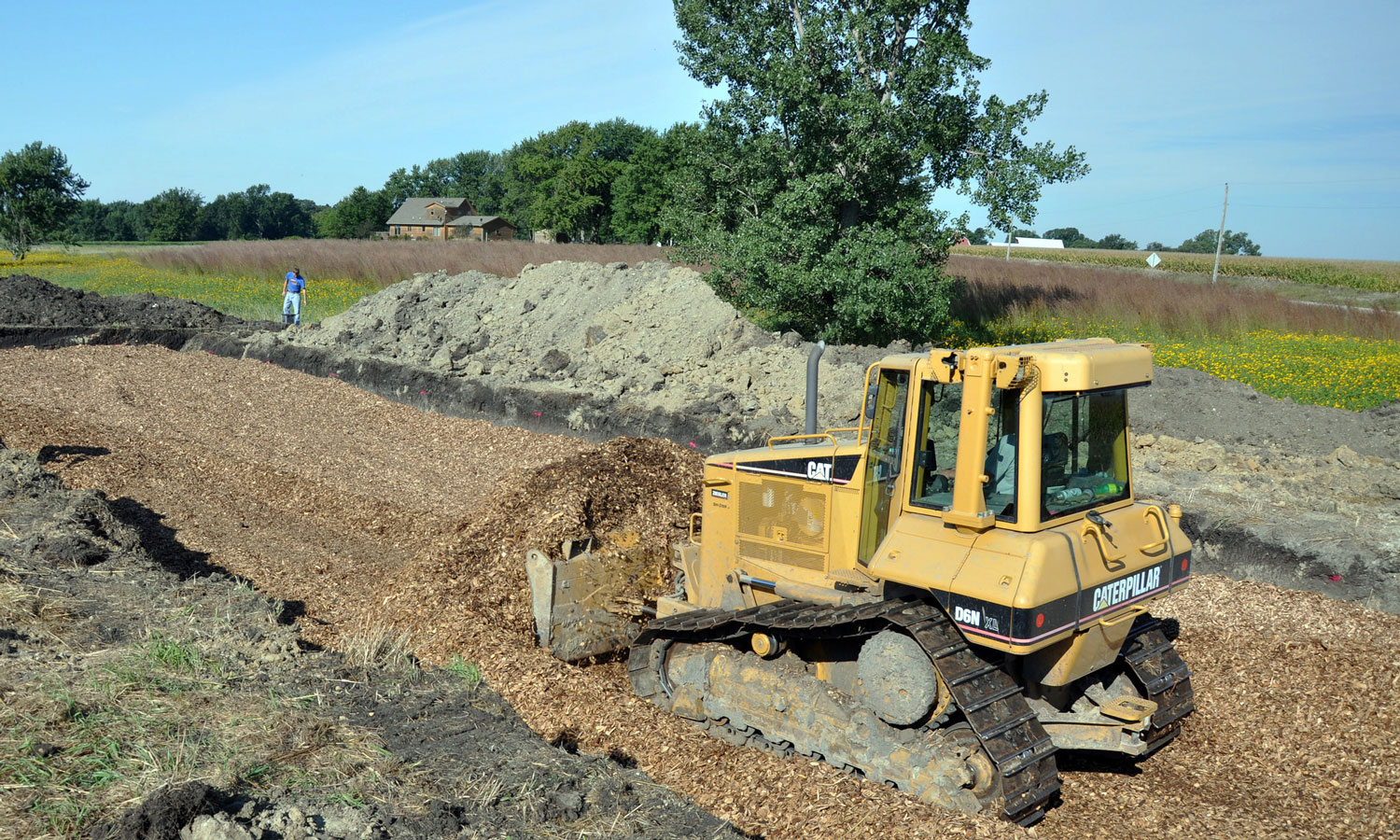
Had Des Moines Water Works prevailed, this new point source definition could have allowed the Environmental Protection Agency to require thousands of drainage districts across the U.S. to get pollution permits, just like large livestock operations or factory pipes that pump sewage into our rivers, launching a new era of farm-focused clean water regulations. However, the court’s dismissal of the suit preserves the status quo, and there remains no federal regulatory reason for farmers to manage the runoff of nitrogen and phosphorous from their lands.
There are still many voluntary reasons for farmers to manage their nutrients. For one thing, they’re expensive assets that farmers would rather keep on their fields than watch disappear downstream. More importantly, farmers want the best water quality possible, but conservation and restoration practices can be very expensive for a small business to implement, especially when many of the practices that would have the greatest downstream impact have little to no on-farm benefits.
That’s one of the major reasons the TRCP works on federal legislation like the farm bill. We agree that the government can help farmers protect private waterways for the public’s benefit by offsetting costs. For instance, federal funding can help farmers implement innovative types of infrastructure, like “denitrifying bioreactors,” which force farm run-off through carbon filters like a giant Brita filter, and “saturated buffers,” which function like wetlands by filtering the flow of farm run-off through plant roots and wet soils.
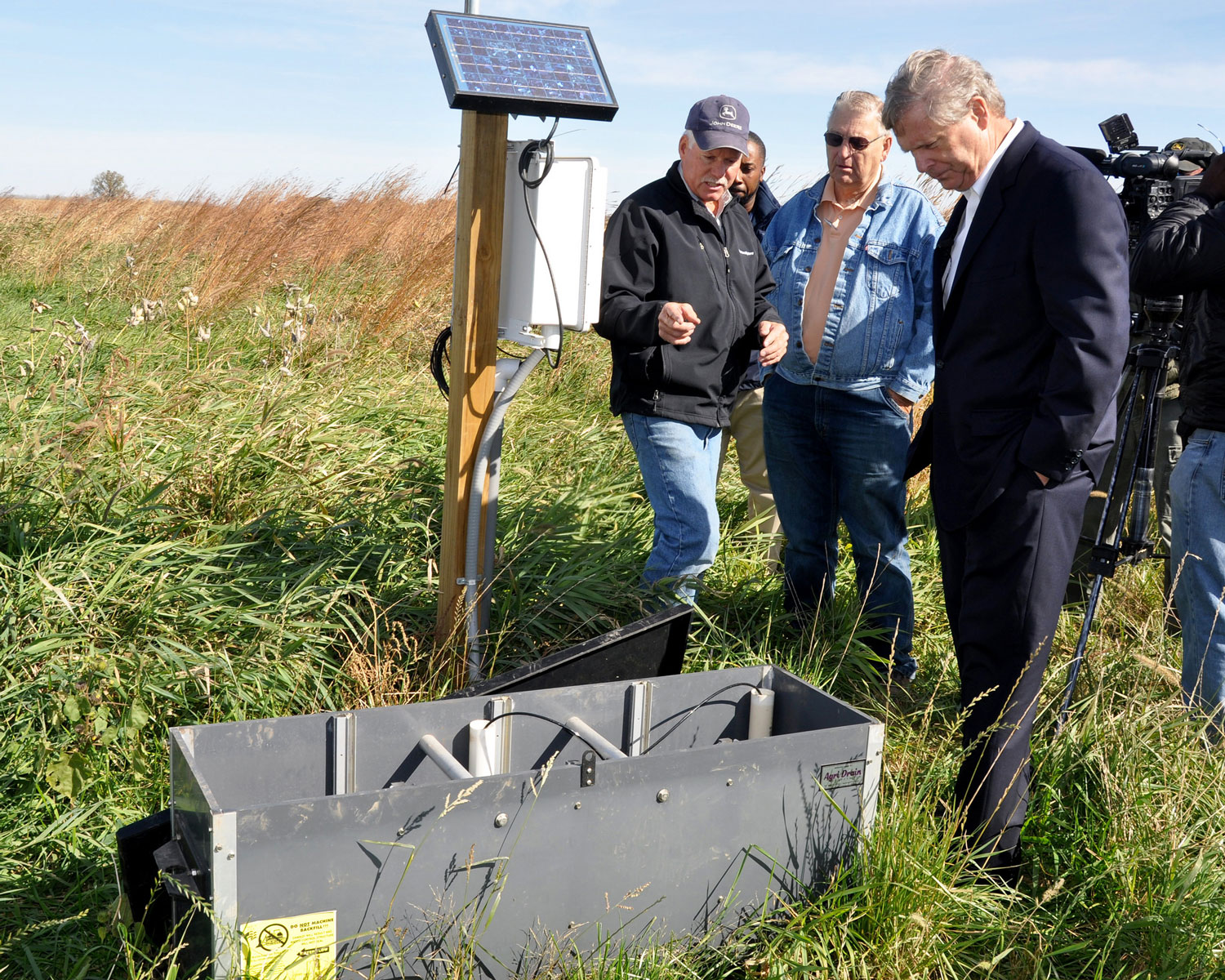
Conserving and restoring actual wetlands improves water quality, too. Our friends at Ducks Unlimited have referred to wetlands as “nature’s kidneys” for their water filtration abilities, and of course, they have the added benefit of providing waterfowl habitat that sportsmen love. Through Congressional investments in farm bill programs, the U.S. Department of Agriculture can help landowners with all of these practices and more.
While we tracked the Des Moines Water Works lawsuit and its many would-be impacts closely, the TRCP and our partners share a long-term dedication to the voluntary, incentive-based conservation on private lands that is key for clean water and healthy fish and wildlife habitat. In the wake of the judge’s decision, it’s even more important that we focus on getting conservation tools to the people and places that want and need them most.
A first-time pheasant hunter offers this humble defense of millennials just taking up the sport
There’s a lot of bad press out there about millennials like me. I’m a 26-year-old D.C. resident who likes cold-brew coffee, wears lumberjack flannel in the city, and spends way too much time at the rock-climbing gym. And yes, I’ve even been called a hipster once or twice. I’m not exactly the image that the word “hunter” conjures.
I’m from Los Angeles, which isn’t especially known for its backwoods hunting. I can’t think of a single person I knew growing up who had even held a shotgun or rifle, let alone shot at game. But for my entire professional career, I’ve been working in the fields of wildlife science and conservation policy. I’ve spent a whole lot of time roaming remote parts of the country alone in a (shoddy) pickup truck and have learned as an adult about the immense value of sportsmen and women. I have been ready and willing to be recruited as a sportswoman for years.
And, finally, last month I went on my first hunt.
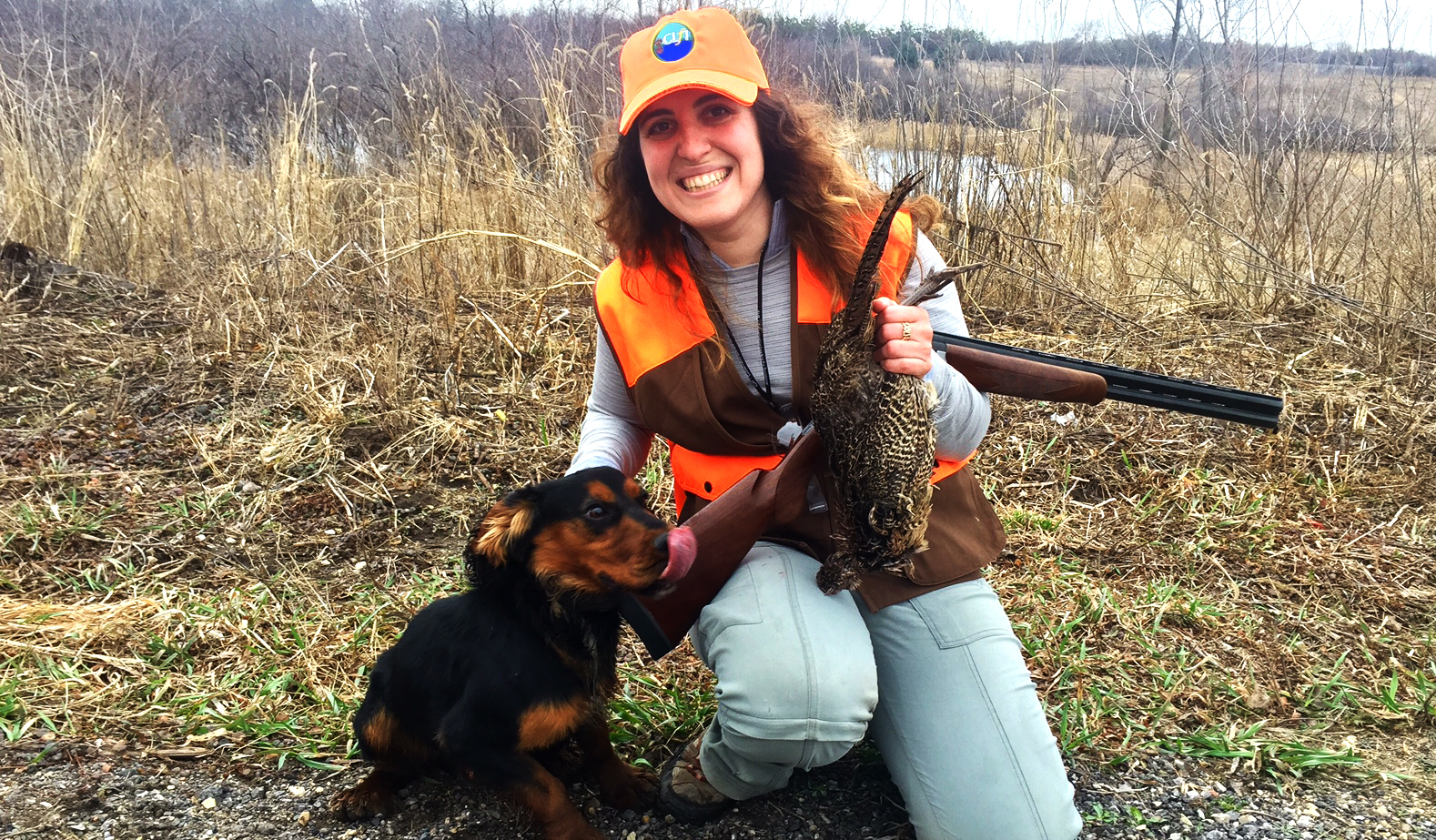
Without a community of sportsmen to rely on, hunting can be pretty intimidating to the uninitiated. There’s a lot to know about licenses, locations, best practices, and equipment—barriers I’m sure many other prospective outdoorsmen and women face. But more than that, in the past I’ve worried—perhaps unfoundedly—that the community of sportsmen and women would be unwilling to take in someone brand new and so unlike the typical hunter.
But I felt nothing but welcomed when, in late-February, on an unseasonably warm day in Illinois, I took down my very first pheasant with pride. I had just spent a week in an intensive crash-course on everything related to hunting and conservation, from how to hold a firearm to how regulatory decisions influence and are influenced by biology, ethics, public perceptions, and the North American Model of Conservation. It was geared towards potential leaders in the field of conservation, ranging from state agency wildlife biologists to young NGO staffers like me, who don’t come from a hunting a fishing background.
The future of habitat and access may depend on established hunters accepting beginners into their tribe Share on X
That description applies to more of us than you might think. It’s no secret that hunters are diminishing in numbers, and yet sportsmen and women have been responsible for a good chunk of conservation funding ever since we decided to tax ourselves for our licenses and gear long ago (during the Great Depression, no less.) There’s a lot of talk in the hunting and fishing community about the importance of recruiting new cohorts of hunters, and retaining or reactivating others, in order to keep these dollars flowing.
So the future of habitat and access just may depend on established hunters accepting beginners like me into their tribe.
Especially now, when all signs point to major budget cuts on the horizon for the federal agencies that carry out conservation in America, the dollars that hunters provide for habitat—and specifically excise taxes enacted by the Pittman-Robertson Act—will be even more critical. After all, the dollars we spend on guns, ammo, and licenses are just as powerful as the dollars of a seasoned sportsman.
Will it matter in 50 years that non-traditional hunters, including the dreaded “hipster hunters,” got interested in the sport as adults primarily because they cared about organic, local, and ethically sourced meat? As long as we all share in the responsibility to our natural resources and sportsmen’s access, I don’t think so.
I hope that folks like me remain deferential to sportsmen’s traditions that were established way before millennials started listening to podcasts and Instagramming their avocado toast (for the record, I have never, and will never, post my brunch online.) The history and culture of hunting should be revered, not reversed, by those of us who are just starting out.
As for me, since my first hunt I’m completely hooked—and shopping for a firearm of my own. And of course, a portion of that sale will go back into conservation.
So, here’s the crux of my humble defense of millennial hunters, from my tribe to yours: We’re not in competition for a stake in America’s hunting legacy. We’re like you; we’re bonded by the singular rush you get knowing that you’ve become part of the natural world in a very primal way. We want to work together with you to create a sustainable future for fish, wildlife, and our—yes, our—sporting traditions.
Theodore Roosevelt’s experiences hunting and fishing certainly fueled his passion for conservation, but it seems that a passion for coffee may have powered his mornings. In fact, Roosevelt’s son once said that his father’s coffee cup was “more in the nature of a bathtub.” TRCP has partnered with Afuera Coffee Co. to bring together his two loves: a strong morning brew and a dedication to conservation. With your purchase, you’ll not only enjoy waking up to the rich aroma of this bolder roast—you’ll be supporting the important work of preserving hunting and fishing opportunities for all.
$4 from each bag is donated to the TRCP, to help continue their efforts of safeguarding critical habitats, productive hunting grounds, and favorite fishing holes for future generations.
Learn More
